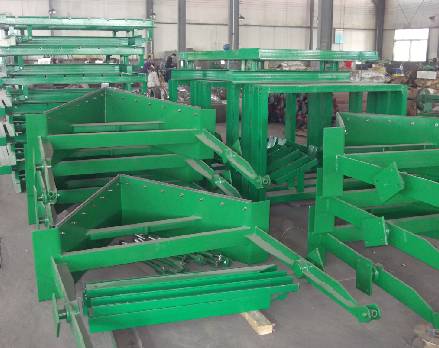 Afrikaans
Afrikaans  Albanian
Albanian  Amharic
Amharic  Arabic
Arabic  Armenian
Armenian  Azerbaijani
Azerbaijani  Basque
Basque  Belarusian
Belarusian  Bengali
Bengali  Bosnian
Bosnian  Bulgarian
Bulgarian  Catalan
Catalan  Cebuano
Cebuano  Corsican
Corsican  Croatian
Croatian  Czech
Czech  Danish
Danish  Dutch
Dutch  English
English  Esperanto
Esperanto  Estonian
Estonian  Finnish
Finnish  French
French  Frisian
Frisian  Galician
Galician  Georgian
Georgian  German
German  Greek
Greek  Gujarati
Gujarati  Haitian Creole
Haitian Creole  hausa
hausa  hawaiian
hawaiian  Hebrew
Hebrew  Hindi
Hindi  Miao
Miao  Hungarian
Hungarian  Icelandic
Icelandic  igbo
igbo  Indonesian
Indonesian  irish
irish  Italian
Italian  Japanese
Japanese  Javanese
Javanese  Kannada
Kannada  kazakh
kazakh  Khmer
Khmer  Rwandese
Rwandese  Korean
Korean  Kurdish
Kurdish  Kyrgyz
Kyrgyz  Lao
Lao  Latin
Latin  Latvian
Latvian  Lithuanian
Lithuanian  Luxembourgish
Luxembourgish  Macedonian
Macedonian  Malgashi
Malgashi  Malay
Malay  Malayalam
Malayalam  Maltese
Maltese  Maori
Maori  Marathi
Marathi  Mongolian
Mongolian  Myanmar
Myanmar  Nepali
Nepali  Norwegian
Norwegian  Norwegian
Norwegian  Occitan
Occitan  Pashto
Pashto  Persian
Persian  Polish
Polish  Portuguese
Portuguese  Punjabi
Punjabi  Romanian
Romanian  Russian
Russian  Samoan
Samoan  Scottish Gaelic
Scottish Gaelic  Serbian
Serbian  Sesotho
Sesotho  Shona
Shona  Sindhi
Sindhi  Sinhala
Sinhala  Slovak
Slovak  Slovenian
Slovenian  Somali
Somali  Spanish
Spanish  Sundanese
Sundanese  Swahili
Swahili  Swedish
Swedish  Tagalog
Tagalog  Tajik
Tajik  Tamil
Tamil  Tatar
Tatar  Telugu
Telugu  Thai
Thai  Turkish
Turkish  Turkmen
Turkmen  Ukrainian
Ukrainian  Urdu
Urdu  Uighur
Uighur  Uzbek
Uzbek  Vietnamese
Vietnamese  Welsh
Welsh  Bantu
Bantu  Yiddish
Yiddish  Yoruba
Yoruba  Zulu
Zulu tapered roller
Understanding Tapered Roller Bearings Design, Function, and Applications
Tapered roller bearings are crucial components in various mechanical systems, renowned for their ability to support both radial and axial loads. This design feature distinguishes them from other bearing types, making them an essential choice in numerous applications, including automotive, industrial machinery, and aerospace.
Design Features
The fundamental structure of a tapered roller bearing consists of an inner ring (cone), an outer ring (cup), tapered rollers, and a cage that separates and retains the rollers. The rollers are shaped like trapezoids, allowing them to naturally align with the axis of the load. This design optimizes the contact surface between the rollers and the raceways, facilitating efficient load distribution and minimizing stress concentrations.
One of the critical elements of tapered roller bearings is their ability to accommodate axial loads alongside radial loads. This is primarily due to the angle at which the rollers are arranged. When a radial load is applied, it creates a reaction force that generates an axial component. The tapered shape of the rollers allows them to efficiently handle these axial forces, making them ideal for applications where load direction can change.
Functionality
Tapered roller bearings operate under the principle of reducing friction and wear between moving parts. When the bearing is in use, the rollers roll along the raceways, distributing the load evenly across the entire bearing surface. This rolling motion significantly reduces friction compared to sliding contact, leading to improved operational efficiency and longevity.
Another significant advantage of tapered roller bearings is their versatility. They can accommodate varying load conditions, making them suitable for high-speed applications or those with variable loads. Additionally, they can be easily adjusted for preload, which helps to optimize bearing performance and minimize wear over time.
tapered roller

Applications
The applications for tapered roller bearings are extensive. In the automotive industry, they are primarily used in vehicle wheel hubs and transmission systems. Their ability to handle heavy loads while allowing for high speeds makes them integral to the performance of modern vehicles. For example, tapered roller bearings are commonly found in the front and rear axle assemblies, where they play a vital role in ensuring smooth and efficient operation.
In the realm of industrial machinery, these bearings are used in various applications, including conveyor systems, construction equipment, and manufacturing machinery. Their robustness and ability to withstand heavy loads make them suitable for environments where reliability and durability are paramount.
Aerospace is another industry where tapered roller bearings shine. They are employed in landing gear systems, turbines, and other critical components, where precision, reliability, and weight savings are crucial. The ability to handle high thrust loads while maintaining exact alignment contributes significantly to the overall safety and performance of aerospace systems.
Maintenance and Lifespan
To ensure the longevity and proper functioning of tapered roller bearings, regular maintenance is essential. This includes proper lubrication, inspection for wear or damage, and ensuring that they are properly aligned. Over time, factors such as load, speed, and environmental conditions can affect bearing performance. Therefore, it is essential to monitor their condition actively and replace them when necessary to prevent catastrophic failure in machinery.
Conclusion
In summary, tapered roller bearings are essential components in a wide range of mechanical systems, offering unique advantages due to their design and functionality. Their ability to handle both radial and axial loads makes them highly versatile, suitable for various applications in automotive, industrial, and aerospace sectors. As technology advances, the importance of these bearings continues to grow, leading to innovations that enhance their performance and reliability. Understanding their design, function, and applications is critical for anyone involved in engineering and manufacturing processes, ensuring that the right bearings are selected for optimal performance and longevity.
-
Revolutionizing Conveyor Reliability with Advanced Rubber Lagging PulleysNewsJul.22,2025
-
Powering Precision and Durability with Expert Manufacturers of Conveyor ComponentsNewsJul.22,2025
-
Optimizing Conveyor Systems with Advanced Conveyor AccessoriesNewsJul.22,2025
-
Maximize Conveyor Efficiency with Quality Conveyor Idler PulleysNewsJul.22,2025
-
Future-Proof Your Conveyor System with High-Performance Polyurethane RollerNewsJul.22,2025
-
Driving Efficiency Forward with Quality Idlers and RollersNewsJul.22,2025





























